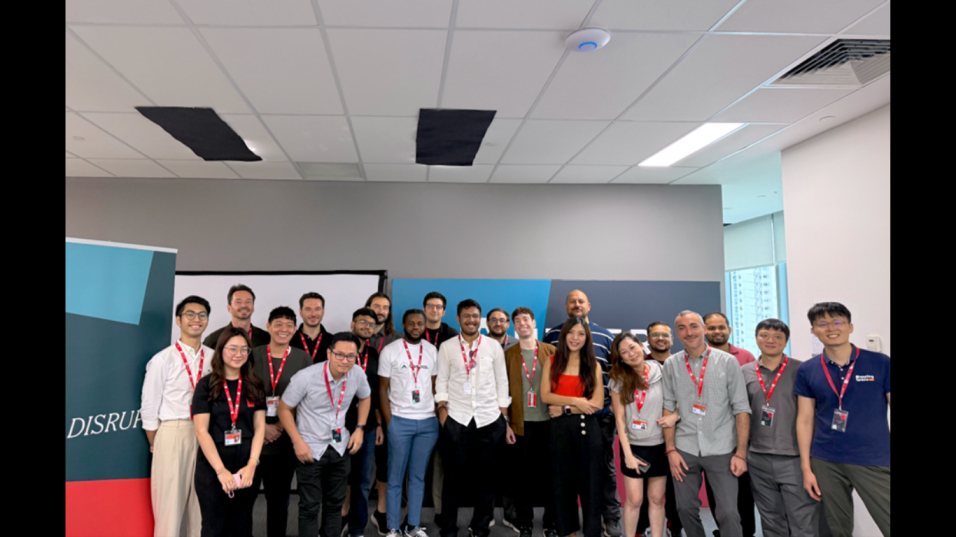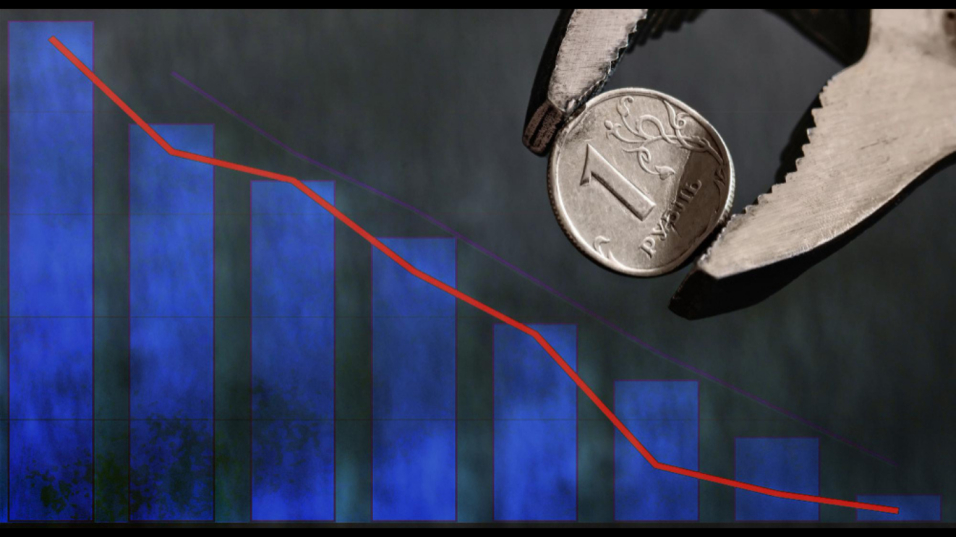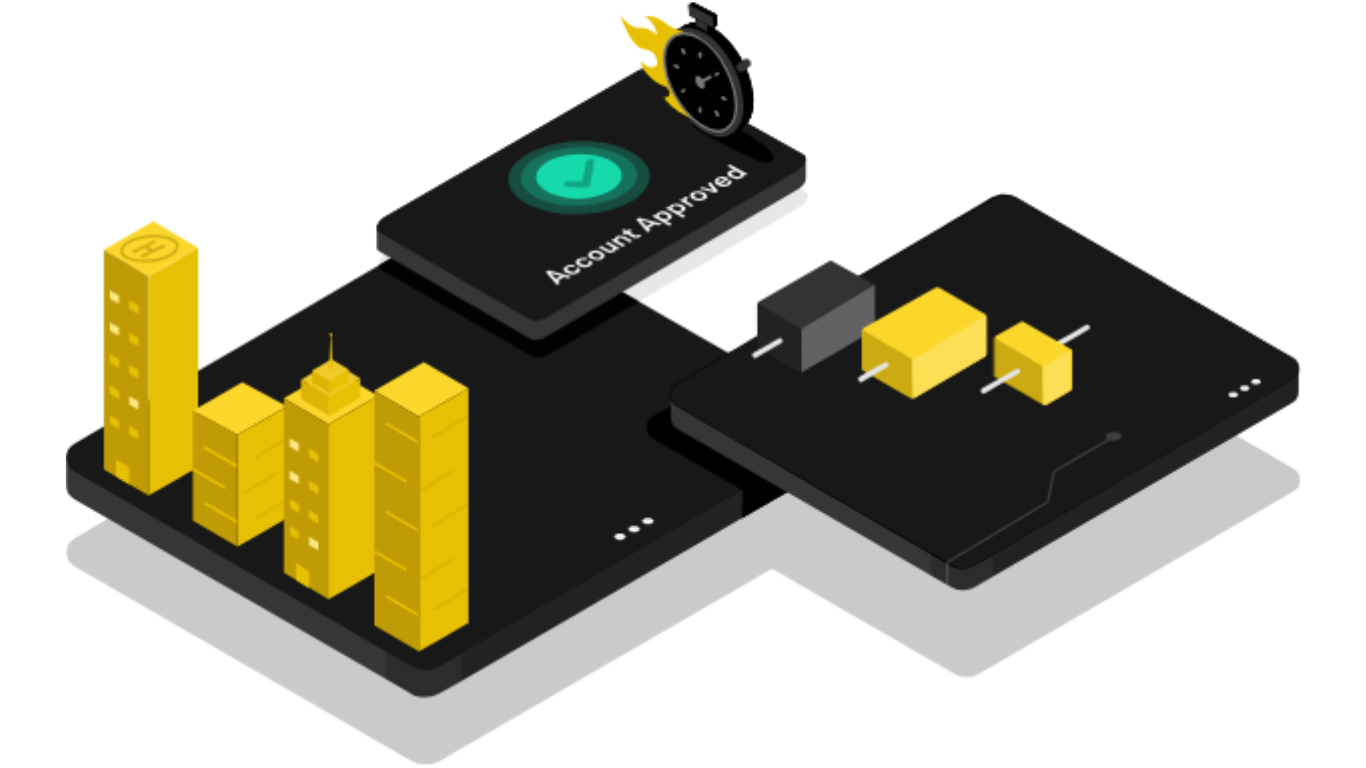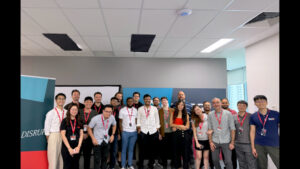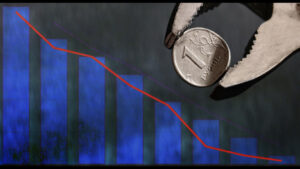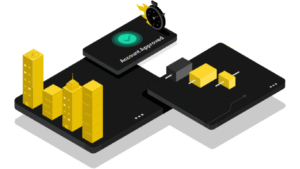The fintech industry continues to evolve dynamically, offering users new solutions that simplify access to financial services. One of the prime examples of this evolution is Tamga, which is successfully tapping into the global trends of digitalisation of finance. Having gone from marketing solutions for fintech to launching full-fledged financial products, Tamga demonstrates how innovation can change not only a company’s business model but also the very structure of users’ interaction with financial services.
One of the notable projects created in cooperation with Tamga is Bistrozaim, launched in 2015 in Ukraine.
The Bistrozaim.UA platform has become a leading player in Ukraine’s microcredit market, providing fast and affordable financial solutions to individuals who often lack access to traditional banking services.
For example, between 2015 and 2024, it processed 2 million 700 thousand applications and approved 1 million 200 thousand loans.
At that time, the market of microfinance services was rapidly developing, but many users faced problems: high interest rates, non-transparent conditions and hidden fees. The emergence of Bystrozaym was a response to these challenges, offering users a fast and convenient solution for getting loans online. The company provided transparency and accessibility, allowing customers to apply for loans without unnecessary bureaucracy, in just a few clicks. This project laid the foundation for future successes of Tamga projects such as Szybka Gotówka, Freezl, Ekassa and others.
Looking to Europe: Finrada and RacoonGo (2019)
Continuing to expand its product and marketing solutions in 2019, Tamga entered the Polish market with the launch of two innovative financial product comparison platforms – Finrada and RacoonGo. These sites became an important milestone in the company’s development, as they allowed users to quickly and transparently compare real loan conditions and choose the most favourable offers. The peculiarity of these platforms was their focus on transparency – users could be sure that all offers on the sites did not contain hidden commissions and other ‘pitfalls’, which was a revolutionary approach for the financial market.
This move not only strengthened Tamga’s position as a leading marketing partner for financial companies and banks, but also emphasised the company’s commitment to creating convenient and secure solutions for consumers.
Finrada and RacoonGo platforms have responded to the growing demand for digital financial services by offering users access to information in the here-and-now, which is particularly important in the digital age.
Innovation as the key to transformation
Tamga is actively investing in digitalisation and process automation to minimise human involvement and make financial transactions as convenient as possible for the end user. For example, automated customer scoring systems that utilise machine learning algorithms significantly speed up lending decisions, reducing risk for the company and increasing customer satisfaction.
However, with innovation comes new challenges. In an increasingly competitive fintech market, Tamga faces the need to continuously improve its products, adapt to regulatory requirements and protect customer data from cyber threats. Advances in technology require not only investment in new solutions, but also constant analysis of changes in customer behaviour to maintain a high level of service.
Our industry is based on constant innovation. We use artificial intelligence and machine learning, which are characterised by extensive research and rapid technological progress. If we are unable to anticipate or adequately respond to technological developments, our ability to operate profitably could suffer. There can be no assurance that research, data collection and development by others will not result in artificial intelligence models that are superior to our artificial intelligence models or products superior to those we develop, or that any technologies, products or services we develop will be preferred. to any existing or new technologies, products or services.
If we are unable to compete with such companies or are unable to meet the need for innovation in our industry, our use of TAMGA products may stagnate or significantly decline.
Our fraud model is based in part on data we receive from a number of third-party verification service providers, data collected from applicants and our experience gained from monitoring borrower performance over time.
Our proprietary artificial intelligence models depend in part on the use of loan applicant and borrower data and other third-party data, and if we lose the ability to use such data or if such data contains inaccuracies, our business could be adversely affected.
We rely on our proprietary artificial intelligence models, which are statistical models built using various data sets. Our artificial intelligence models rely on a wide range of data sources, including data collected from applicants and borrowers, data from credit bureaus and our credit experience gained from monitoring borrowers’ payment performance over time.
In accordance with our agreements with our partners, we collect and use data collected from loan borrowers.
If we are unable to use data collected from borrowers, data obtained from credit bureaus, repayment data collected as part of our loan servicing activities or other third-party data used in our artificial intelligence models, or our access to such data is limited, our ability to accurately evaluate potential borrowers, detect fraud and verify applicant data would be materially impaired.
Third-party data sources on which we rely include alternative data sources. Such data is obtained electronically from third parties and is used in our artificial intelligence models to determine the optimal interest rate and in our fraud model to verify the accuracy of the information reported by the applicant. Data from national credit bureaus and other consumer reporting data sources and other information we receive from third parties about an applicant or borrower may be inaccurate or may not accurately reflect the creditworthiness of the applicant or borrower for a variety of reasons, including inaccurate reporting by creditors to credit bureaus, errors, untimeliness or incompleteness.
For example, the credit scores of loan applicants may not reflect the actual creditworthiness of such applicants because credit scores may be based on outdated, incomplete or inaccurate data, or such reports would be outdated. Although we utilise numerous third-party data sources and reports from several credit bureaus within our proprietary models to help mitigate this risk this does not eliminate the risk of inaccurate predictions about borrowers’ likelihood of loan repayment.
Future Challenges
The consumer credit market is highly competitive and is becoming increasingly dynamic as new technologies continue to enter the market. With the introduction of new technologies and the influx of new entrants, competition may persist and intensify in the future, which could adversely affect our operations or business.
Our inability to compete effectively could result in a decrease in the volume of loans that financial companies originate through us, a decrease in the average loan size originated on our platform, a decrease in our fees, an increase in marketing and borrower acquisition costs or the inability of the TAMGA platform to achieve or maintain broader market acceptance, any of which could adversely affect our business and results of operations.
Consumer lending is a broad and competitive market, and we compete to varying degrees with all other sources of unsecured consumer credit. These may include banks, non-bank lenders, including retail lenders and other financial technology lending platforms.
Because online loans often serve as a substitute for credit cards, we also compete with the convenience and ubiquity that credit cards represent. Many of our competitors use different business models, such as issuing their own credit cards, have different cost structures or regulatory obligations, or participate selectively in different market segments. They may ultimately be more successful or more adaptable to new regulatory, economic, technological and other changes, including the use of new data sources or credit models.
We may also face competition from banks or companies that have not previously competed in the consumer credit market, including companies that have access to vast amounts of consumer-related information that can be used in developing their own credit risk models.
Our current or potential competitors may be better able to develop new products because of their large and experienced data processing and analysis teams that can respond more quickly to new technologies.
Many of our current or potential competitors have significantly greater resources, such as financial, technical and marketing resources, than we do and may devote greater resources to developing, promoting, selling and supporting their platforms and distribution channels. We face competition in areas such as compliance capabilities, commercial financing terms and cost of capital, interest rates and fees (and other financing terms) available to consumers from our partner banks, approval levels, model efficiency, speed and ease of loan origination, ease of use, marketing expertise, service levels, products and services, technology capabilities and integration, borrower experience, brand and reputation and terms available to our base.
Our competitors may also have longer operating histories, lower commercial financing costs or cost of capital, larger borrower bases, more diversified products and borrower bases, operational efficiencies, more versatile or extensive technology platforms, greater brand recognition and brand loyalty, broader borrower and partner relationships, a larger and/or more diversified investor base for credit financing than we have, and more extensive offerings of credit financing than we have.
In addition, our existing and potential competitors may decide to change their pricing and business models to compete directly with us.
Our competitiveness will also be affected by our ability to provide our partners with a commensurate or more extensive set of credit products than those offered by our competitors.
In addition, current or potential competitors, including financial technology lending platforms and existing or potential banking and non-banking partners, may also acquire or form strategic alliances with each other, which could result in our competitors being able to offer more competitive credit terms due to their access to lower cost capital.
Such acquisitions or strategic alliances among our competitors or potential competitors may also make our competitors more adaptable to a rapidly changing regulatory environment. To remain competitive, we may need to increase our compliance costs, or our competitiveness could be adversely affected. including financial technology lending platforms and existing or potential financial partners, may also acquire or form strategic alliances with each other, which could result in our competitors being able to offer more competitive credit terms due to their access to cheaper capital.
If we are unable to continue to improve our artificial intelligence models, or if our artificial intelligence models contain errors or are otherwise ineffective, our growth prospects, business, financial condition and results of operations will be adversely affected.
Our ability to attract potential borrowers to our platforms and increase the number of loans originated through our platforms will depend significantly on our ability to effectively assess a borrower’s creditworthiness and probability of default and, based on this assessment, offer competitively priced loans and obtain higher approval rates and will accordingly affect our fees. In addition, our overall operating efficiency and profitability will depend significantly on our ability to maintain a high degree of automation in the loan application process and to achieve incremental improvements in the degree of automation. If our artificial intelligence models fail to adequately predict the creditworthiness of borrowers due to the design of our models, programming or other errors, and our artificial intelligence models fail to detect and account for such errors, or any of the other components of our credit decision process fail, we may suffer losses in the future.
BACKGROUND
TAMGA is an international fintech company that develops technology and marketing solutions for the financial sector.
The company’s mission is to improve people’s financial literacy and make financial products simple and accessible. TAMGA promotes the principles of responsible lending, the terms and conditions of consumer loans are personalised and allow to avoid indebtedness.
The credit platform developed by TAMGA allows banks and financial companies to customise their credit offerings according to their policies and business needs.
The abundance of learner data leads to higher approval rates and lower interest rates for the same level of arrears.
The company’s portfolio includes a number of products: platforms for automating offline and online lending processes, services for online user verification and financial verification, systems for automatically assessing and improving customers’ credit history, online instalment services, and comparison sites.
TAMGA’s headcount: 250+ employees
Loans issued using TAMGA products and services since the beginning of operations: 2,200,000 loans.
Number of unique customers on the TAMGA platform: 1,500,000+ people.
Article received on email




